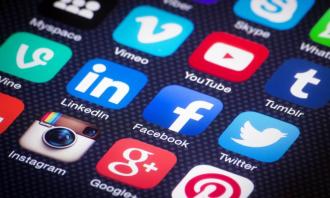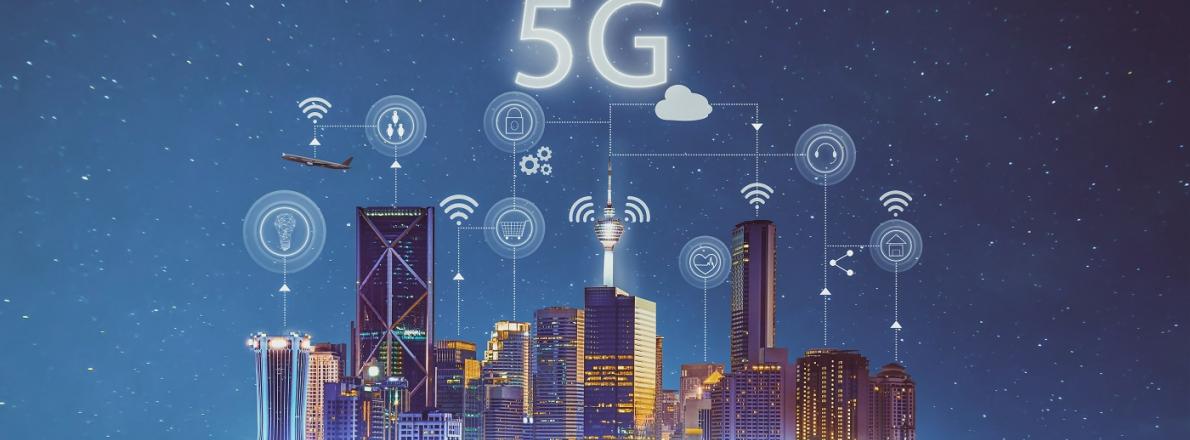
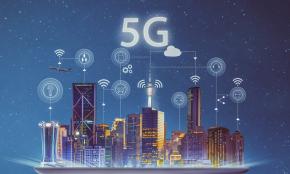

Nissrine Fessikh
17-09-2021 8 min read5G at the heart of debates
5G has been the topic of much discussion since it was announced, and its rollout is imminent, even effective in some cities. It's only a matter of months before we see a massive rollout of 5G from smartphone manufacturers and plan providers. So we're going to take a look at the topic of 5G and its impact on all the players involved in the mobile application value chain.
To address this topic, we will first lay the foundation of the technology and identify the main sectors impacted by this innovation. Then, we will present the specific impact of this technology on the entire mobile industry against the backdrop of digital development of the territory, through the vision of 3 business leaders: Laurent Bacca, President of Fullsave, Antoine Roussel, CEO of Alsatis, and Romuald Ribas, CTO of Appstud. Finally, 5G or not 5G, we will question the real benefit of this deployment.
5G: the latest mobile web technology
Mobile Web, or Mobile Internet, is the term given to the ability of a cell phone to access the Internet. In short, it is the use of web browsers and applications on your smartphone. What appears today as an intrinsic feature of a smartphone, is actually the result of a very important evolution in phone technology. The beginnings: the WAP protocol If we have to give an origin to the time arrow of the mobile web, the WAP (Wireless Application Protocol) is the most logical choice. WAP was introduced in 1999, and it would be several years before a real alternative to WAP would emerge.
At that time, even displaying a classic HTML page was a challenge, and specific formats such as the WAP markup, specifically adapted to the display on a mobile screen, were preferred.
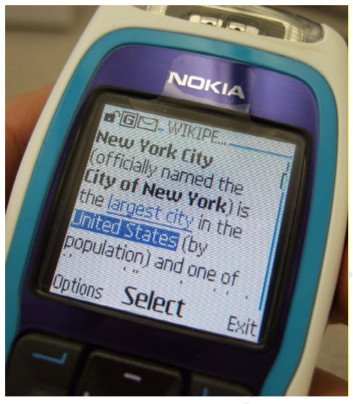
This is obviously a considerable brake on the use of the Internet on mobile.
The 3G revolution In 2003, Nokia announced the third generation of mobile telephony, called 3G. It follows several technologies, in chronological order AMPS, GSM, GPRS, then finally EDGE. It is important to note that the meaning of the term 3G, 4G, or 5G as used by most people, is actually a shorthand for the cellular Internet technology associated with this generation. 3G is the result of nearly 20 years of research and development by the ITU (International Telecommunication Union). In addition to the technological challenge, 3G required the allocation of a part of the bandwidth (400Mhz-3GHz) in order to create a real telecommunication standard.
If we compare 3G to EDGE, also called 2.5G, the difference is impressive: we go from 384 Kbps to 3Mbps, that is to say, a speed almost multiplied by 10.
We are in 2003, and for example, one of the technical events that will mark this year is the opening by Apple of its iTunes platform. In this context, 3G opens the door to game downloads, other large applications, video calls, streaming, and many other applications that were impossible with the existing technologies.
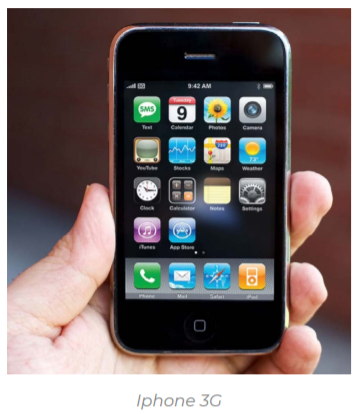
4G, always faster
4G is the fourth generation of cellular network technology. In 2015, most phones sold on the market were equipped to communicate in 4G, giving them access to an ever-higher speed. Under normal usage conditions, 4G can reach speeds up to 10 times faster than 3G, further pushing the possibilities in terms of service consumption. The difference is also in the stability of the signal. Indeed, 3G tends to "slow down" during constant use, while 4G remains stable for long periods.
This makes it easier to access streaming content with a good quality video stream.
5G, the final boss of the mobile web?
5G is the next step that the mobile web is taking. The main difference in usage is speed. Like previous developments in throughput, the progression is far more impressive than a simple linear function. Indeed, 5G promises to speed nearly 200 times faster than 4G, going from 100 Mbps to 20Gbps. Of course, these speeds are rarely reached in the real world, for 4G we are talking about more than 35Mbps, and for 5G we are aiming for a fairly wide range between 50Mbps and 3Gbps. Which is already huge!
La 4G, toujours plus vite
La 4G est la quatrième génération de technologie du réseau cellulaire. En 2015, la plupart des téléphones vendus sur le marché étaient équipés pour communiquer en 4G, leur donnant accès à un débit toujours plus élevé. En conditions d’utilisation normales, la 4G peut atteindre une vitesse 10 fois plus importante que la 3G, repoussant encore les possibilités en terme de consommation de services. La différence se fait aussi dans la stabilité du signal. En effet, la 3G a tendance à «ralentir» pendant une utilisation constante, là où la 4G reste stable pendant de longues périodes.
Cela permet d’accéder plus facilement à des contenus de type streaming avec une bonne qualité de flux vidéo.

Another important parameter is latency. Latency, commonly called "ping", is the response time of a request, from the moment it leaves the client to the server, until the moment it returns to the client. Very simply, A requests information from B, B sends the answer back to A: the latency is the time between A sending the request and A receiving the answer. When we have such high bandwidths as those mentioned, latency becomes a crucial parameter, because, with too high latency, the interest of high bandwidth is limited for applications such as streaming (Netflix, Youtube, Twitch), cloud computing (see below), or video conference. For example, autonomous cars could very well take advantage of 5G to let the driving intelligence be managed by an artificial intelligence centralized in a remote server, which would communicate with the car via 5G. This would break the limitations currently generated by the hardware embedded in such a vehicle, but requires a high throughput and very low latency. It can also be noted that 5G has higher security standards than previous generations, as well as better geolocation accuracy.

The uses that will benefit from it?
This new frequency, which is a source of competitiveness, will open a new era in the digital industry, but not only! Here is an overview of the sectors and uses that could be concerned.
Visio Conference
In a world where it is becoming essential to be able to communicate despite a sometimes complex geographical reality, especially in times of health crisis, 5G is a godsend. 5G is a way to get access to a high-quality Internet, supporting functions such as video conferencing easily. Note that 4G already allowed quality video conferencing, however, it could find its limits when several actors were gathered simultaneously with the cameras on.
More streaming
One of the sectors that will be directly impacted by 5G is streaming. This technology is very resource-intensive and requires a stable connection and a decent speed, without which the experience is very disturbed (freezing, deteriorated quality, etc.). Among the most popular services are Twitch and Netflix, which will greatly benefit from 5G, allowing their users to stream in high quality and without interruption thanks to the speed of 5G.
More and more cloud computing
By increasing the flow and speed of data transit, cloud computing becomes more and more interesting. We can imagine deporting more and more calculations on much more powerful servers because 5G networks will be much more conducive to large data transits. As an example, there are services like Shadow that use cloud computing (called in this case, Cloud Gaming) to offer a user an online gaming experience close to the one he can have with a local computer. To do this, these services use our smartphones or other devices as simple receivers to display the image, while all the calculations are done on remote servers. The devices then have two functions: to display the image on the screen and to send the commands operated by the user to the cloud. This method involves a lot of data and requires a high-quality Internet connection, which 5G can provide to the user of such a service. Gaming, again and again! When we practice gaming on our smartphones, we often play in multiplayer mode on the Internet. Some games allow you to play against other players in real-time and therefore require a sufficiently stable Internet connection. We can mention for example Clash Royale, PUBG, Wild Rift, Fortnite, and others that are largely impacted by latency. In some games, such as MOBAs (multiplayer arena games) or FPSs (first-person shooters), even the slightest latency is problematic. In a competitive game where the player has to react in less than a second, a latency, or a "freeze" can make the experience really unpleasant. If you're interested in gaming, check out our article: "Mobile gaming success stories". So, with the speed offered by 5G, mobile gaming should be much easier.
Gaming, again and again!
When we practice gaming on our smartphones, we often play in multiplayer mode on the Internet. Some games allow you to play against other players in real-time and therefore require a stable Internet connection. We can mention for example Clash Royale, PUBG, Wild Rift, Fortnite, and others that are largely impacted by latency.
Medicine
The arrival of 5G will greatly benefit the field of medicine. The Covid-19 pandemic has shown the crucial need to think of new solutions to treat remotely. In this sense, 5G will enable significant progress in telemedicine. The objective is to facilitate access to care for as many people as possible. In addition, in the world of medicine, a great deal of data is transmitted from one specialist to another. Medical imaging, for example, is often very voluminous and sensitive, and is a direct application of the benefits of 5G, thanks to its high speed and security. Teleoperation is another application. Indeed, the surgeon uses a robot that reproduces his every move while he is hundreds of kilometers away from the operation site. While reducing the fatigue of the surgeon who no longer needs to stand in front of his patient, the technology would contribute to reducing medical deserts. This feat is made possible by the low latency offered by the technology.
Don't miss any news, subscribe now!
Related articles
Publications recommandées



